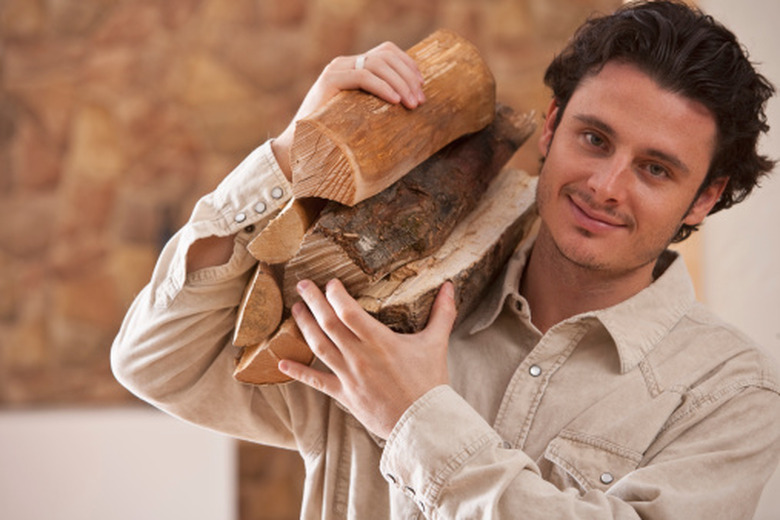Can You Burn Apple Wood In A Fireplace?
Apple trees when harvested are valued by woodworkers for their wood quality. Apple wood is not always generally available as general firewood because it burns hot but slowly, and it generates very little smoke, making it ideal for wood-fire cooking and grilling. Because it has a very pleasant smoky aroma, apple wood is also highly prized for smoking meats. As with any firewood, apple wood needs to be fully seasoned before it can be safely and efficiently burned.
Apple Wood Heat Value
Apple Wood Heat Value
According to the Cornell University Extension, apple is among those hardwoods suitable, once it's seasoned or fully dried, for burning in wood stoves and fireplaces. The heat value of seasoned apple wood in BTUs, or British Thermal Units, which measure how much potential heat energy is available per volume of wood, is very high — 26.6. That rating places it higher than oak and slightly lower than the densest firewood available, including hickory and eastern hornbeam. This means that apple wood is a very efficient source of wood heat.
Burning Apple Wood in Fireplaces
Burning Apple Wood in Fireplaces
Apple wood is quite fragrant when it burns, with a sweet smoky scent, which is pleasant in a fireplace. However, because it is so dense, apple is harder to ignite and keep burning than other woods. If you don't have a gas-jet fire ignition setup on your fireplace, you may need more than rudimentary fire-building skills — and some softer, faster firewood on hand, such as cedar or pine — to get a good apple fire going and keep it going. However, once apple wood is burning, it will burn slowly and well for quite some time and produce a good bed of hot coals. Apple wood also produces very little smoke when it burns, which is always a plus in an open fireplace.
Apple Wood for Cooking
Apple Wood for Cooking
Grilled-meat enthusiasts and serious bakers of artisan bread and pizzas are often fans of apple wood for general open-fire cooking, baking and grilling or smoking meats. The qualities that make it good for firewood are even better for baking, especially burning hot with very little smoke or flame. Because bakers and grillers are willing to pay a premium price for apple wood, unless you live in the midst of apple country, you may not be able to find it being sold as ordinary firewood.
Splitting, Seasoning & Storing Apple Wood
Splitting, Seasoning & Storing Apple Wood
Felling, cutting and splitting unwanted apple trees is one way to get apple firewood — so consider volunteering if a neighbor or friend needs some apples taken out. Apple trees are not usually that large except for the main trunk, so mostly you'll be trimming and cutting limbs. Split trunks and larger limb sections immediately, because hard wood is very hard to cut once it's dried. Season or dry wood for at least one year before burning it to prevent a heavy creosote accumulation in your chimney. Store wood away from your home, covered and up off the ground, to discourage mice, ants, termites and other insects. Bring wood in only as you need it. That way, you'll avoid bringing critters indoors.
References
- Cornell University Cooperative Extension; How to Choose Firewood Trees; Jim Ochterski
- The Firepit and Grilling Guru: What Is the Best Firewood?
- University of Illinois Extension; Shopping Tips for Buying Firewood; December 2009
- The Wood Heat Organization: Good Firewood
- JUCA Fireplaces: Firewood Ratings and Info
